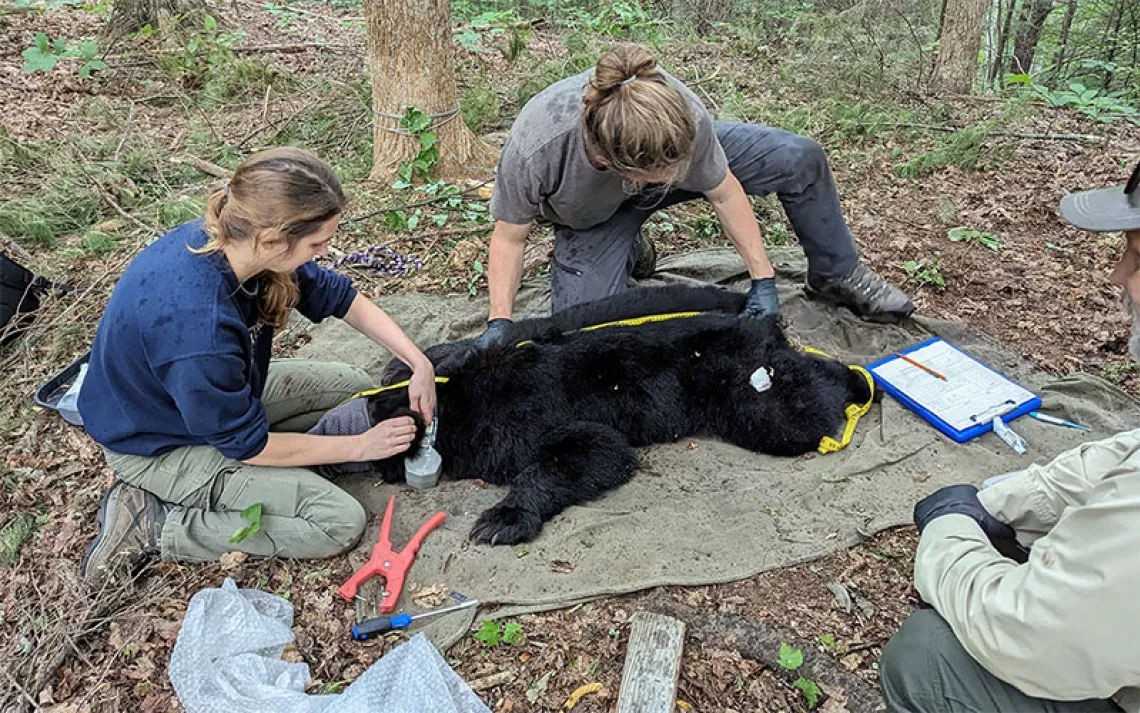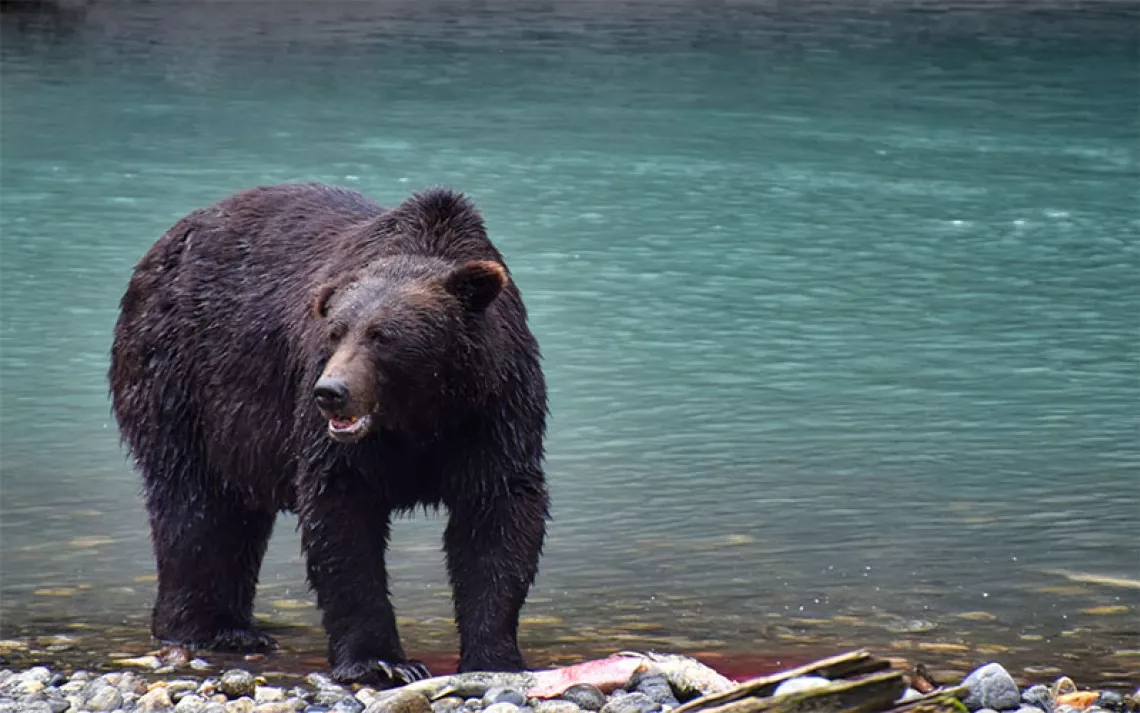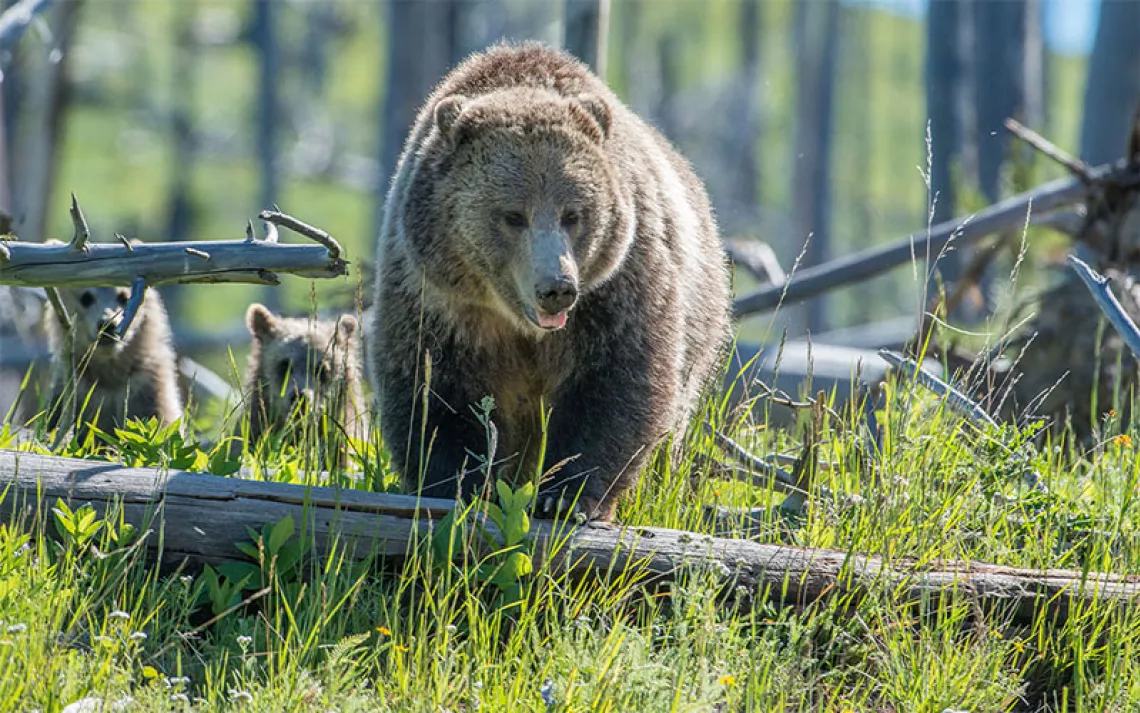Yes, Bears Were Everywhere in New England This Year
A New Hampshire bear rescue center gives orphaned cubs a second chance
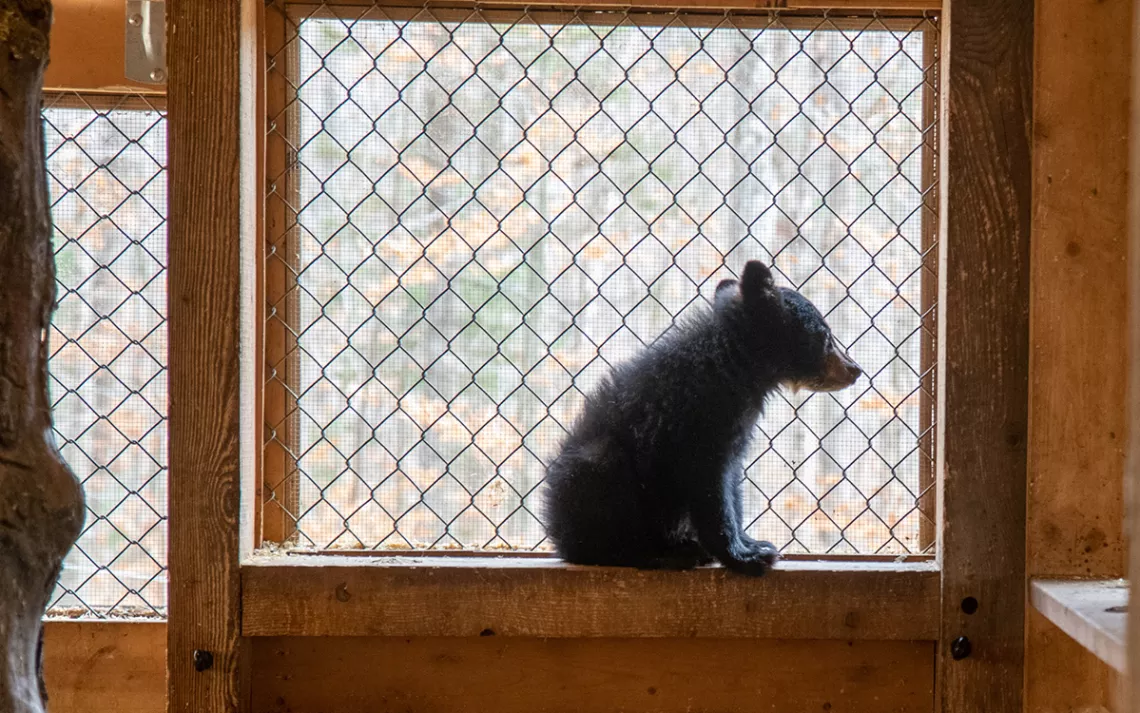
A bear cub sits in a screened enclosure at Kilham Bear Center in Lyme, New Hampshire, where rescues have skyrocketed in 2022. | Photo by Ed Quinn
On a fall morning at Kilham Bear Center in Lyme, New Hampshire, Vermont Fish & Wildlife bear program technician Molly Byrne opened the rear hatch of her SUV. Inside was a cage, and inside of that squatted a tiny, and clearly terrified, black bear cub. Earlier that morning, she was found in an apple tree in Thetford, Vermont. “We lured her down with donuts and cat food,” Byrne said.
Byrne and the center’s primary caregiver, Ethan Kilham, slid the trap out of the car and released the cub into an indoor pen the size of a large walk-in closet. There, five other cubs—all recent arrivals, likely born in January, when most sows give birth—were romping, snoozing, or snacking on apples.
The new cub climbed to the pen’s loft and soon was fast asleep. “Imagine how tired you’d be if you’d just gotten snatched from your home and put in a cage,” Ethan said. Each of these cubs had lost a mother, and all the nourishment and protection a sow provides.
This rescue was the year’s 72nd orphan; three weeks later the number climbed to 109. Most years, the center has 20 to 25 rescues by winter, but 2022 has hardly been normal.
The surge in orphaned cubs is largely a result of what scientists call a “no-food year,” with low production of the nutrient-dense beech nuts and red oak acorns that compose bears’ typical diets. It is a natural, cyclical phenomenon. But as the climate warms, such hungry years may be more frequent. “It used to be 10 years between no-food years,” said Ethan’s uncle, Ben Kilham, a wildlife biologist who cofounded the center in 1993 with his wife, Deb. The last no-food year was 2018.
Severe drought in 2022 also thwarted New England’s berry crop, further reducing natural food for bears, a trend expected to continue. “We do expect that these changes in the climate are going to have negative impacts on northern forest ecosystems,” said Mary Stampone, New Hampshire’s chief climatologist. “These ecosystems were designed for bitter-cold winters and hot, humid summers. And we don’t have that anymore.”
With little wild food, mother bears take more risks and travel more widely, foraging in dumpsters, chicken coops, and garages to put on winter weight. This leaves them vulnerable to cars and state euthanization. Some homeowners, feeling threatened by a food-seeking bear, shoot on sight. Hunting, as well, leaves orphaned cubs. New Hampshire, like the majority of states with a black bear population, allows regulated hunting.
The impression for people who live near the woods is that there are too many bears now. Not so, according to Ben. “In a good food year, you don’t see any bears. They prefer to be in the forest to eat. They don’t want to be in your backyard. But if they have to be, they’re gonna be.”
Andrew Timmons, game programs supervisor for New Hampshire Fish and Game, said bear numbers remain “at goal” in four of his state’s regions, and slightly above in two of them. “I don’t want to give the impression that we are overpopulated with bears, because we are not,” he said, of the state’s roughly 6,800 bears.
The illusion of more bears also dovetails with pandemic-era relocations to rural areas. “Even if the bear population is stable, when the human population arrives, there will be more sightings and more conflicts,” said Dan Gibbs of the Tennessee Wildlife Resources Agency, where he also chairs the oversight committee of Bear Wise, an association of state agencies educating the public on how to coexist with bears.
Numbers from New Hampshire point to a sharp rise in bear-human conflict, up by 65 percent this year from the prior five-year average. This no-food year has seen a 44 percent rise in bears struck by vehicles, and a 38 percent rise in killings by the public due to conflict. Timmons explained that a state law allowing homeowners to shoot bears may be outdated.
“It doesn’t make it OK to treat bears like vermin to resolve a conflict in a chicken coop,” he said. “We want to encourage people to take on more responsibility to protect their property with nonlethal means.” The best way to reduce bear confrontations is to control food scraps, bird feeders, trash, and chickens. Experts agree that an electric fence is a highly effective bear deterrent.
Fear of black bears is common, but experts say such concerns are largely based on misconceptions. “Bears are generally afraid of humans and need a motive to attack them,” Ben said. On average there is one fatal black bear encounter per year in the US, a fraction of the number of killings by dogs.
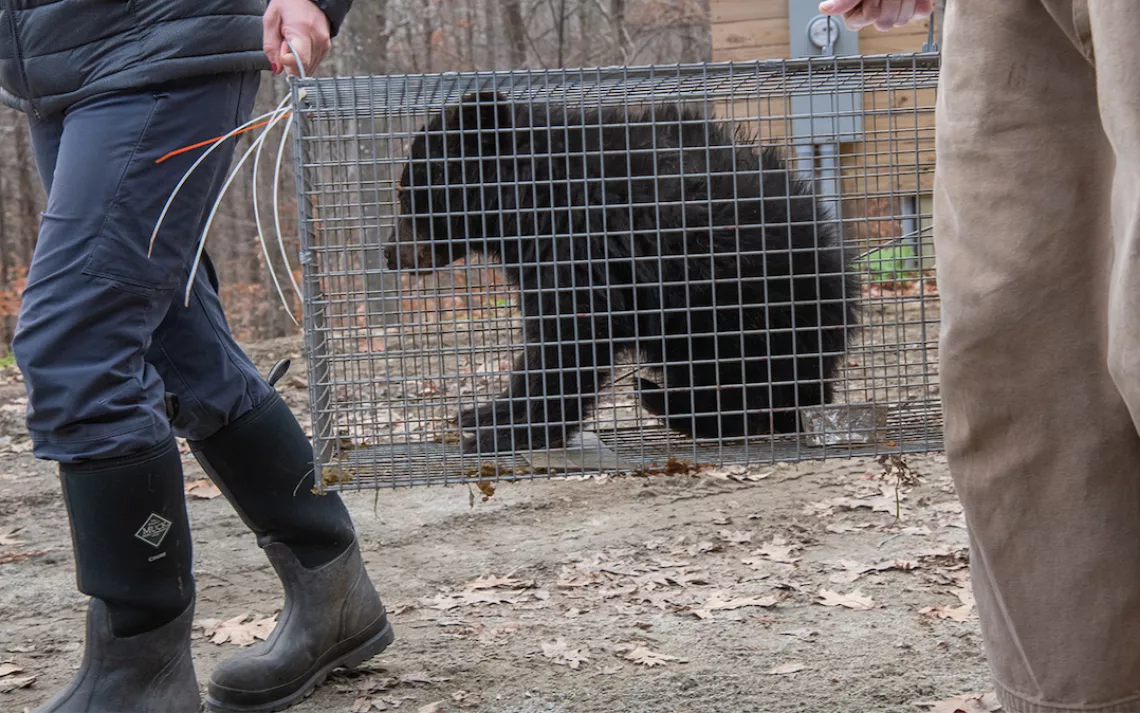
Two rescue center workers carry a newly arrived cub. | Photo by Ed Quinn
Ben, 70, grew up in a family of animal scientists; at 63, he received his doctorate in black bear behavior. In the center he founded, cubs are prepared physically and emotionally for release at 18 months old—the age a bear leaves its mother—into the vast northern forest.
They come from Vermont, New Hampshire, Massachusetts, and, in one recent, high-profile case, Connecticut. In May, a beloved female that locals called Bobbi was shot outside a chicken coop in Newtown. The killing left two cubs too young to fend for themselves. After public outcry, the Connecticut Department of Energy and Environmental Protection captured the four-month-old bears and transported them to the center. Ethan named them Indra and Izzy, and today they are thriving in the property’s outdoor enclosure, where the more mature cubs will spend the winter.
Ethan’s videos of the fluffy furballs now reach 90,000 Instagram followers. In them, cubs tussle and tumble, socialize, climb, and forage. They are learning, without their mothers, how to be bears. “There is something about a bear, even though it doesn't have a face like ours, that people very much relate to,” Ben said. “Their behavior mirrors ours.”
When a sow dies, her cubs will frequently stay by her body, confused and grieving. “The sound of a cub crying is not something you can ever forget,” Ethan said. If the babies go into hiding, someone dispatched from the state wildlife agency will move the mother to where her cubs can be beguiled by powdered donuts, then trapped or tranquilized.
The center’s cubs weigh roughly 15 to 80 pounds. Some were chubby when their mothers were killed, and others were emaciated. The cubs trill, yelp, howl melodically, and lap from water bowls. Visitors make the bears skittish, but Ethan is a trusted caregiver with evident empathy. “Once you meet a cub, there’s not much you won’t do for it,” he said. “When they arrive, their situation is awful, and here, it becomes hopeful.”
The cubs' survival rate at the center is 80 percent, on par with what it would be in the wild with their mother. The Kilhams see rejecting a cub as a death sentence. Without its mother’s milk and foraging skills, an orphan will usually die in winter. “There’s no alternative,” Ben said. “As long as we are here, we will never say no.”
Until we learn to live alongside these creatures whose food sources are increasingly uncertain, sows will die, and cubs will need rescuing. “You almost have to numb yourself to the sad stories that bring them here,” Ben said. “But the positive part is that now they will live, and most of them, a good long time.”
 The Magazine of The Sierra Club
The Magazine of The Sierra Club

